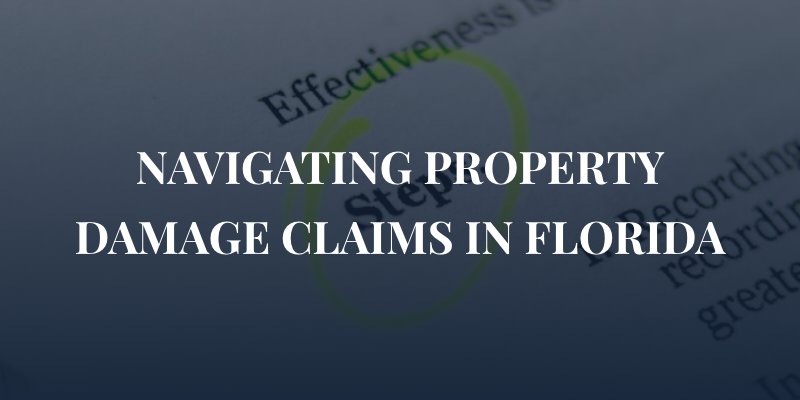
Auto accidents are distressing events that can leave you not only with physical injuries but also property damage. If you find yourself in such a situation in Florida, knowing how to navigate the property damage claim process is essential to ensure your vehicle is repaired or replaced promptly. In this article, we will walk you through the steps of making a property damage claim in Florida and discuss the considerations for choosing whether to use the other driver’s insurance or your own coverage.
Immediately after an accident, ensure that everyone involved is safe and call for medical assistance if needed. Once safety is secured, gather crucial information such as the other driver’s contact details, insurance information, photographs, license plate number, and any eyewitness accounts. Document the accident scene with photos or videos to provide visual evidence.
Regardless of whether you plan to use your own insurance or the other driver’s coverage, it’s essential to notify your insurance company of the accident promptly. Failure to report the incident may lead to complications later. Your insurer will guide you through the necessary steps and paperwork.
Obtain an accurate estimate of the damage to your vehicle. You can either go to a repair shop recommended by your insurance company or get multiple estimates from different repair shops. This step is crucial as it forms the basis of your property damage claim.
When it comes to making a property damage claim in Florida, you have two main options:
If the accident was caused by another driver’s negligence, you can file a claim with their insurance company. This option is often more straightforward, as the at-fault driver’s insurance should cover the costs of repairs or replacement of your vehicle assuming they have enough coverage. In Florida, drivers are only required to have a minimum of $10,000 in property damage insurance, which is what many drivers are insured up to. So, if your damage is more than $10,000, it can be beneficial to use your own comprehensive and collision coverage (if you purchased it) because it will cover the damages up to the amount of the vehicle.
Alternatively, you can choose to use your own insurance coverage, such as collision coverage or uninsured motorist coverage, depending on the circumstances. This option may be preferable if the other driver is uninsured, underinsured, or if you are at fault for the accident.
Experiencing an auto accident and subsequent property damage is never easy, but understanding the steps to make a property damage claim in Florida can help ease the process. Timely reporting, accurate assessment of damage, and choosing the right approach for your claim are critical for a smooth resolution. Whether you decide to work with the other driver’s insurance or use your own coverage, be sure to weigh the advantages and disadvantages based on the specific circumstances of the accident.
However, navigating the complexities of property damage claims can be overwhelming, especially if you’re dealing with injuries as well. That’s where the seasoned legal professionals at Shapiro | Delgado | Hofmann step in. With their expertise, you can receive comprehensive guidance on handling property damage claims effectively, ensuring your rights are protected while you focus on recovering from the accident’s aftermath. Their experienced car accident lawyers in Sarasota and Bradenton are ready to provide you with the support you need during this challenging time.